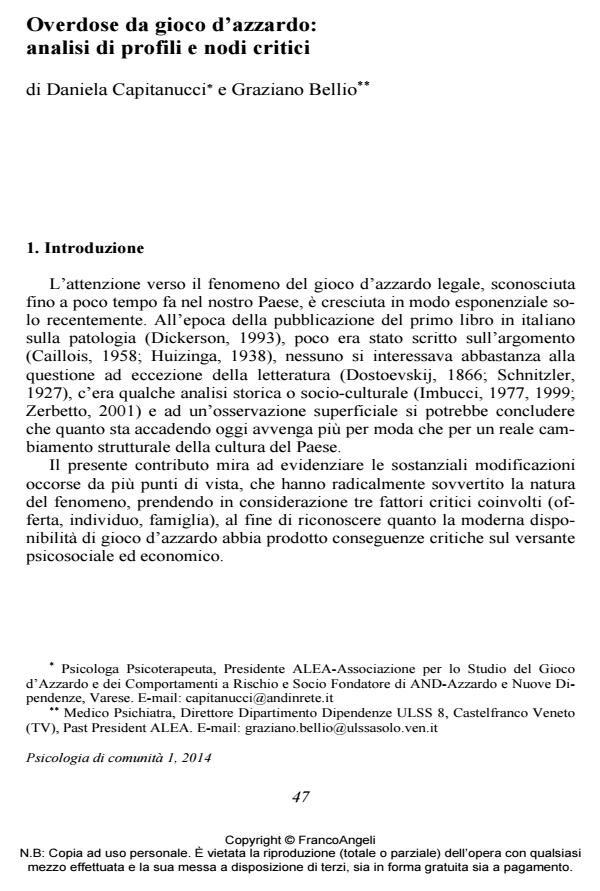Gambling Overdose: analysis of profiles and critical nodes
Journal title PSICOLOGIA DI COMUNITA’
Author/s Daniela Capitanucci, Graziano Bellio
Publishing Year 2014 Issue 2014/1
Language Italian Pages 12 P. 47-58 File size 78 KB
DOI 10.3280/PSC2014-001004
DOI is like a bar code for intellectual property: to have more infomation
click here
Below, you can see the article first page
If you want to buy this article in PDF format, you can do it, following the instructions to buy download credits

FrancoAngeli is member of Publishers International Linking Association, Inc (PILA), a not-for-profit association which run the CrossRef service enabling links to and from online scholarly content.
Gambling is a risky activity for the well-being and quality of life of the individual, the family and the community. The increasing accessibility to gambling has brought to a parallel development of addiction problems. Structural risk factors, notably the "near miss" effect and operant conditioning, are able to affect the individual’s behavior. The harmful consequences of gambling involve the family as a whole. The Blaszczynski and Nower’s pathways model could be useful for the clinical conceptualization of the gambler’s diagnosis, prognosis and treatment. Similarly, the Orford’s stress-strain-cope-support model could provide a guide to support families.
Keywords: Gambling, problem gambling, operant conditioning, pathways model, stressstrain- cope-support model.
Daniela Capitanucci, Graziano Bellio, Overdose da gioco d’azzardo: analisi di profili e nodi critici in "PSICOLOGIA DI COMUNITA’" 1/2014, pp 47-58, DOI: 10.3280/PSC2014-001004